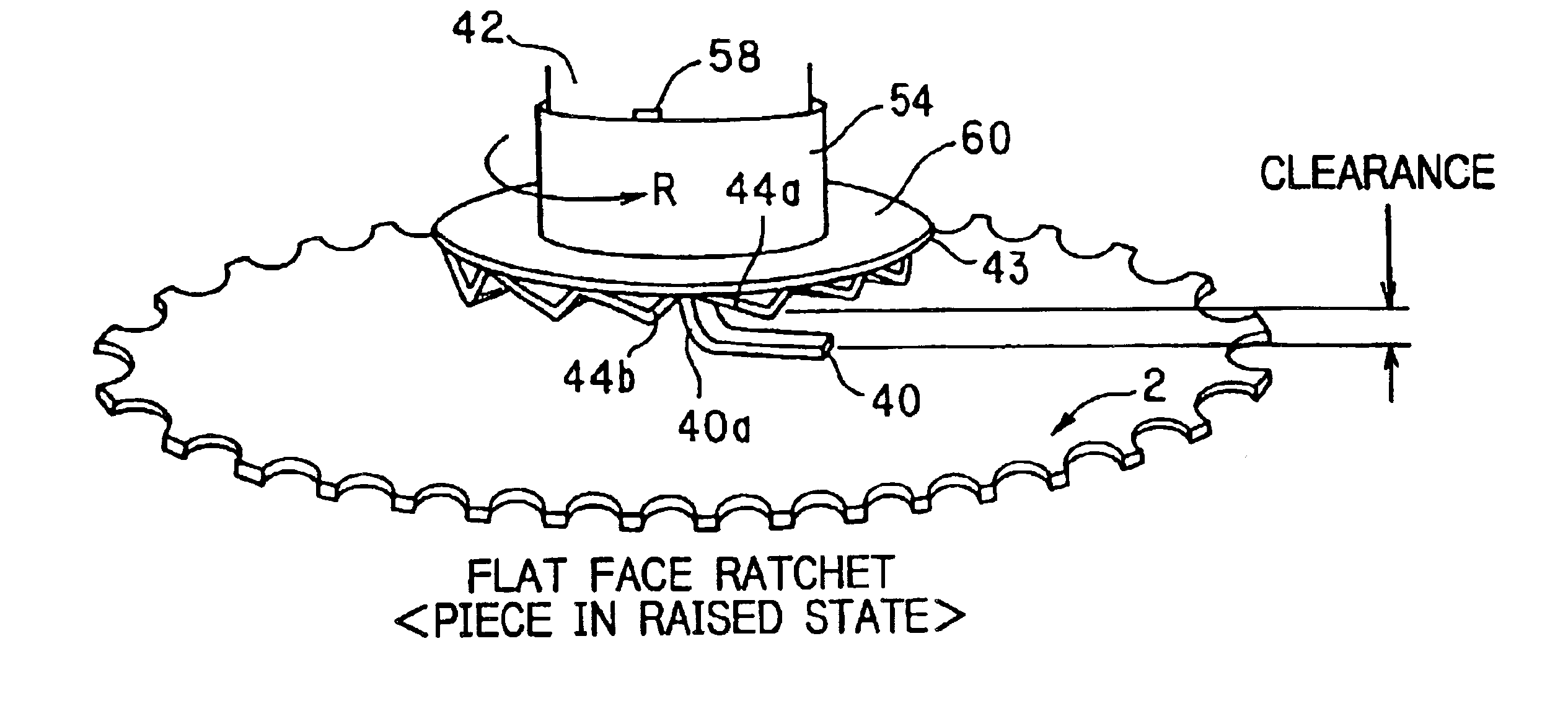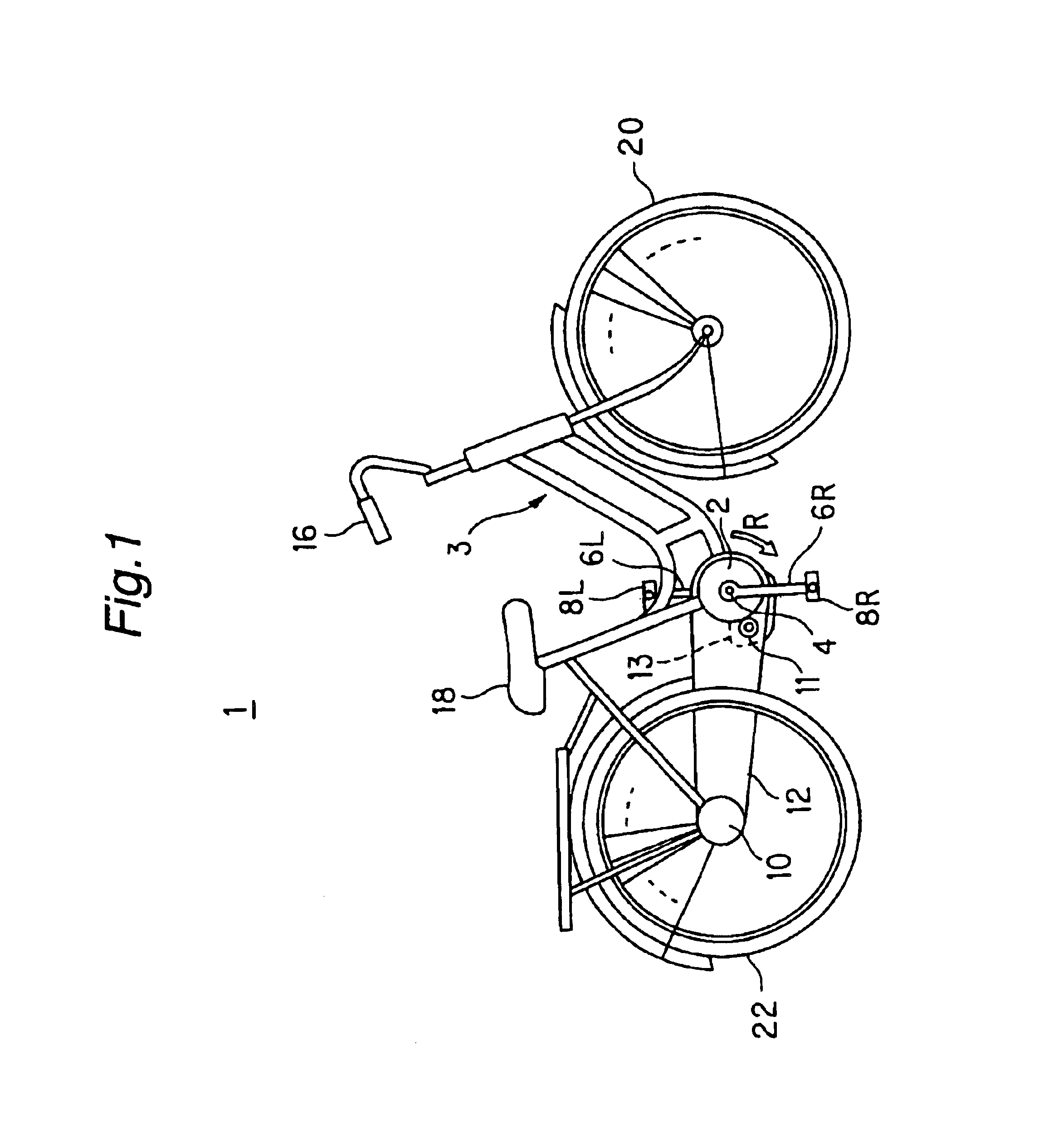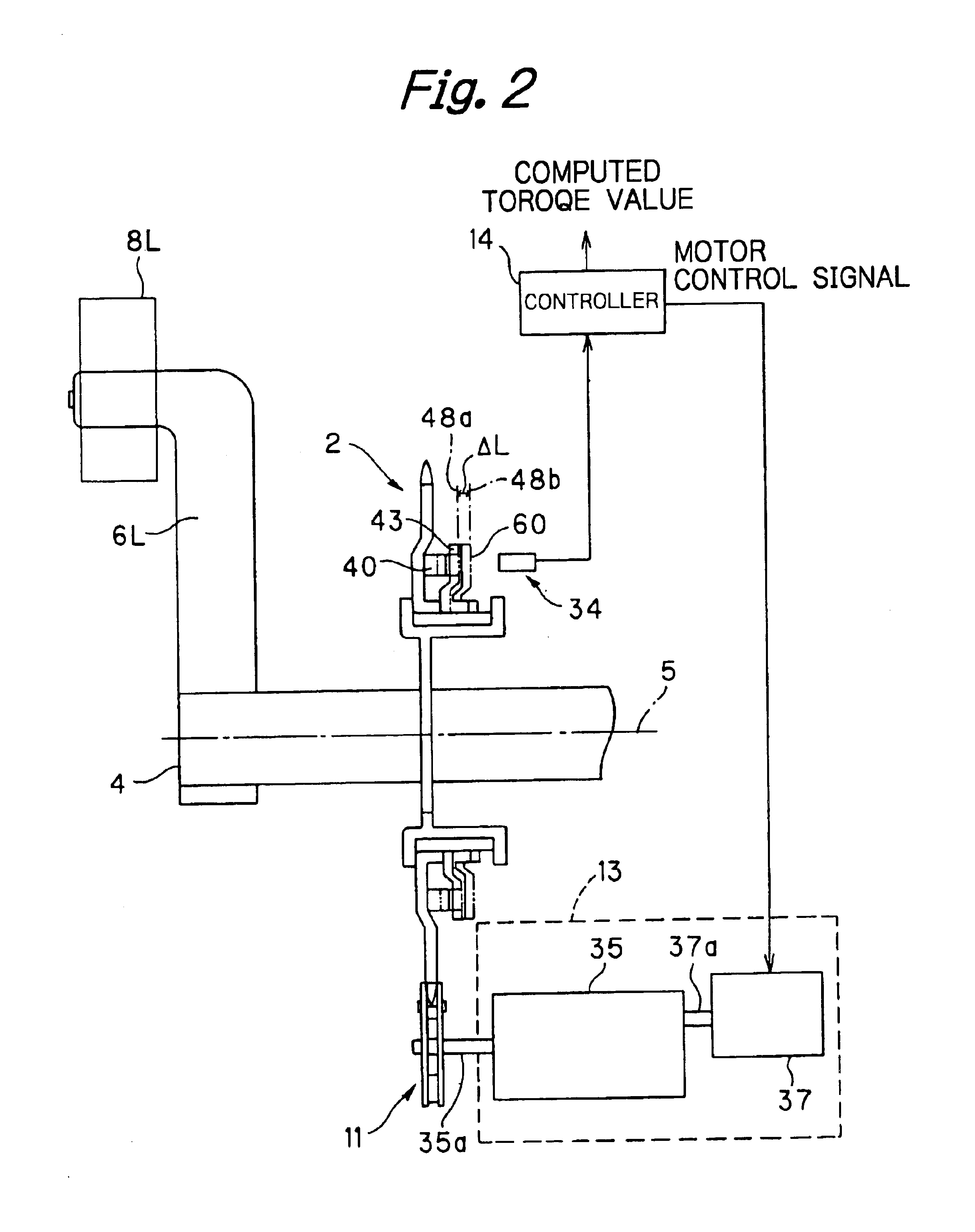Power-assisted bicycle
a technology of power-assisted bicycles and bicycles, which is applied in the direction of clutches, freewheel clutches, vehicle components, etc., can solve the problems of large space, increased weight of torque detection systems, and the need to significantly modify the body frame of conventional bicycles, and achieves simple and lightweight structure and economic
- Summary
- Abstract
- Description
- Claims
- Application Information
AI Technical Summary
Benefits of technology
Problems solved by technology
Method used
Image
Examples
first embodiment
FIG. 1 is a brief representation of a power-assisted bicycle 1 according to the first embodiment of the present invention. As shown in FIG. 1, a major skeleton structure of the power-assisted bicycle 1 comprises a body frame 3 made of a metallic tube, and various elements including a front wheel 20, a handlebar 16 for steering the front wheel, a rear wheel 22, a saddle 18 and so on which are mounted on the body frame 3 in a conventional manner as with an ordinary bicycle.
At a central lower portion of the body frame 3, a drive shaft 4 is held on the body frame 3 so as to be rotatable, and pedals 8L and 8R are mounted at the left-hand and right-hand end portions of the drive shaft 4 through crank shafts 6L and 6R, respectively. A sprocket 2 (acting as the driven side) is coaxially mounted on the drive shaft 4 (acting as the driving side) through a ratchet gear, as will be described in more detail, and the ratchet gear is arranged to transmit only the rotational torque in a one-way dir...
second embodiment
FIGS. 8(A)and 8(B) each illustrate a torque detection mechanism system in accordance with a second embodiment of the present invention. In this embodiment, the elements other than the torque detection mechanism system are the same as those of the first embodiment, so that identical and like structuring elements are provided with identical reference numerals and symbols and a duplicate detailed description thereof will be omitted for brevity of explanation.
As shown in FIGS. 8(A) and 8(B), the torque detection mechanism system of the second embodiment is provided with a sprocket 70 having a cylindrical accommodation part 82 at the central portion thereof. The cylindrical accommodation part 82 is shaped in a cylindrical form that protrudes toward a first plate face side of the sprocket 70 and is depressed on the other (second) plate face side thereof. The sprocket 70 may be disposed so that the depression of the cylindrical accommodation part 82 is directed to the pedal side, and the d...
third embodiment
The third embodiment can offer pronounced advantages and merits as will be summarized below.
(1) The ratchet gear and the torque detection mechanism system can be implemented by one mechanism system, so that the number of parts can be reduced. As a consequence, the bicycle can be rendered more compact in size and lighter in weight as well as being manufactured at lower cost than conventional ones.
(2) The disc spring with a unit for receiving a load imposed upon pedals and a load (torque) detection sensor integrated therein is used at the portion at which the pedaling torque is to be detected. Therefore, the two functions can be implemented by one unit, achieving a further compactness and lightness of structure and further reducing costs of manufacturing, in addition to the effects as described above.
(3) The present invention can achieve a compact, lightweight and simple structure of the torque detection mechanism system at a very high level as has been described in (1) and (2) above....
PUM
 Login to View More
Login to View More Abstract
Description
Claims
Application Information
 Login to View More
Login to View More - R&D
- Intellectual Property
- Life Sciences
- Materials
- Tech Scout
- Unparalleled Data Quality
- Higher Quality Content
- 60% Fewer Hallucinations
Browse by: Latest US Patents, China's latest patents, Technical Efficacy Thesaurus, Application Domain, Technology Topic, Popular Technical Reports.
© 2025 PatSnap. All rights reserved.Legal|Privacy policy|Modern Slavery Act Transparency Statement|Sitemap|About US| Contact US: help@patsnap.com



